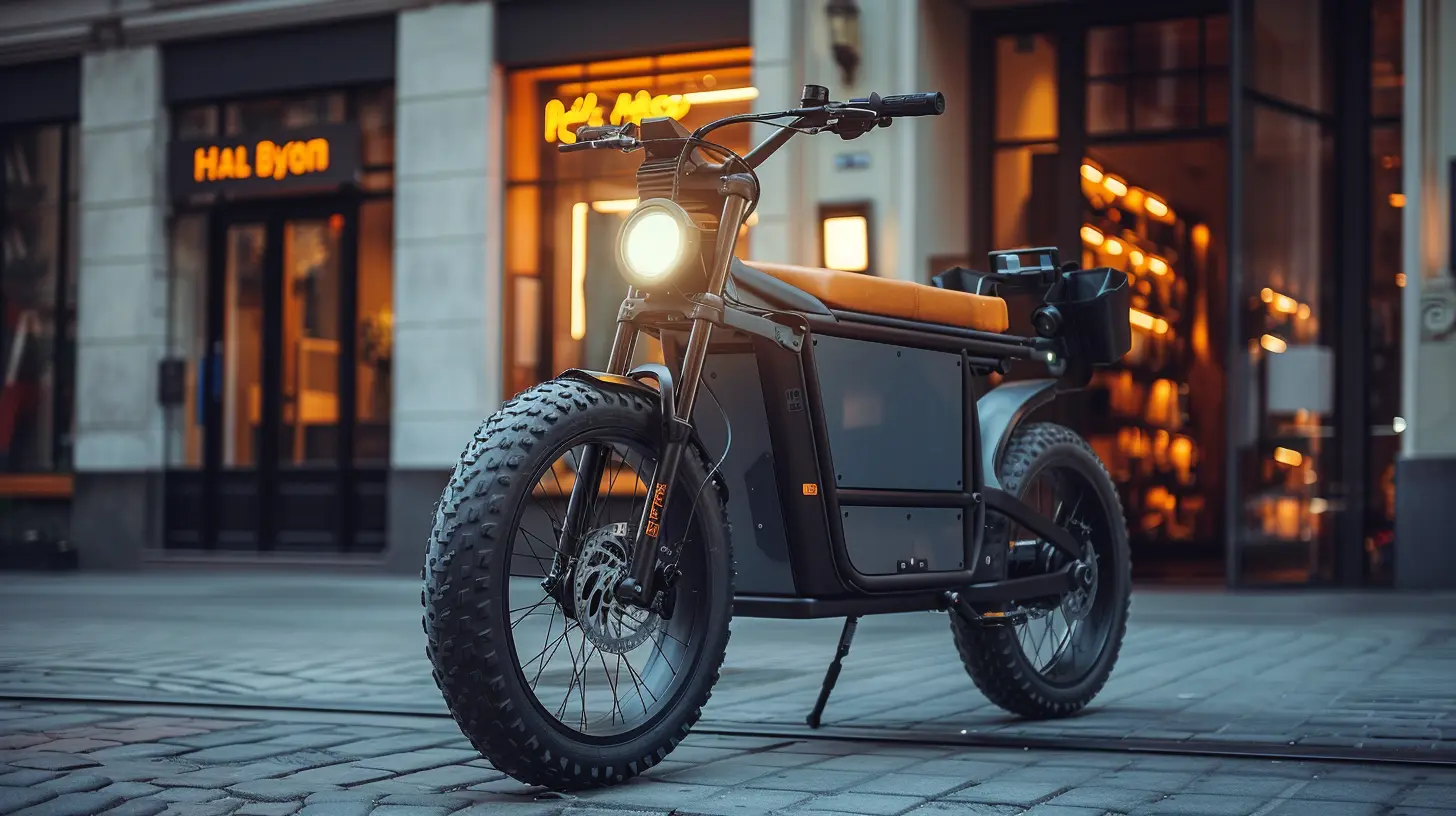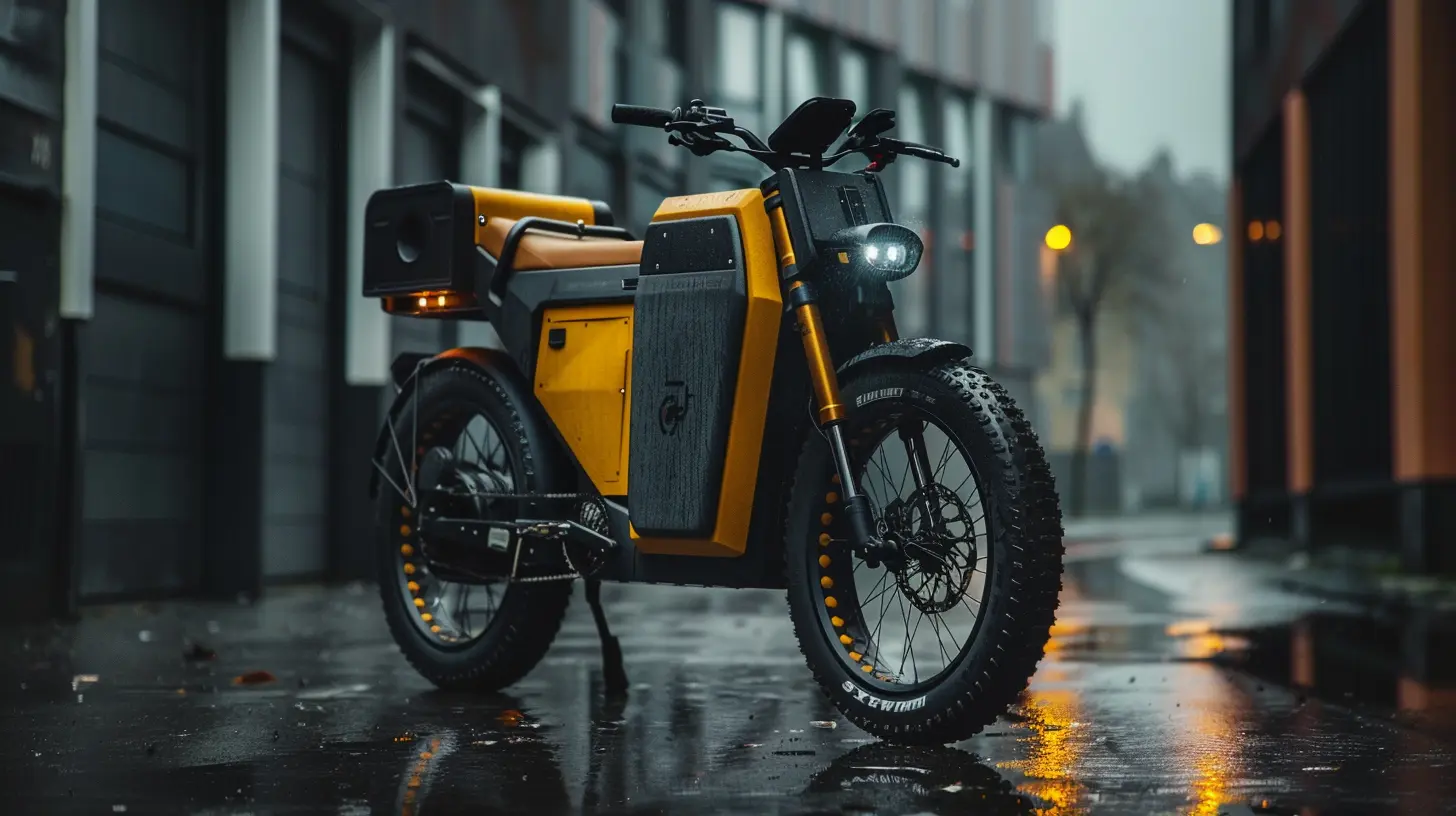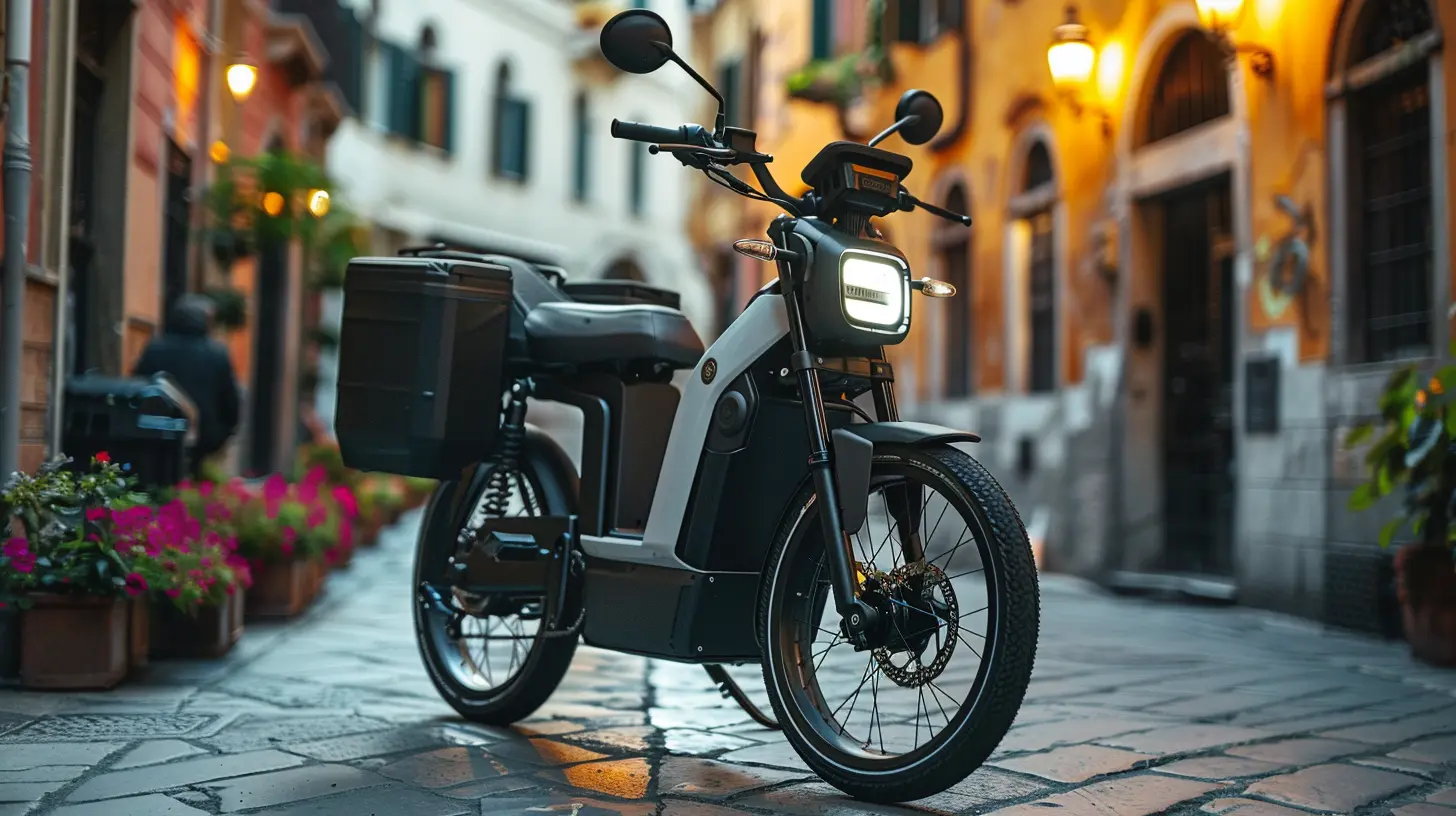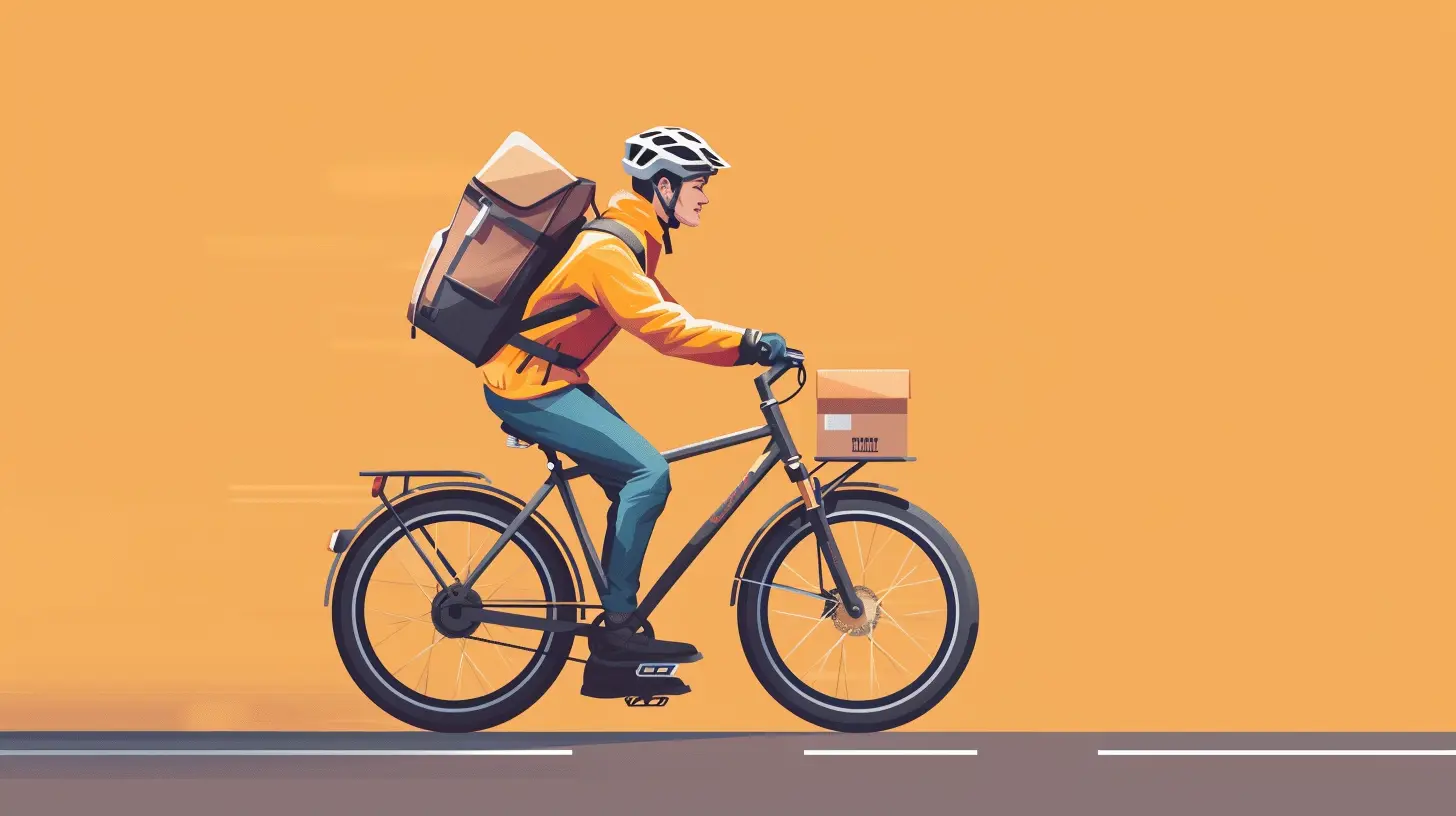How Electric Bicycles Are Empowering Delivery Services
29 March 2025
In today's fast-paced world, delivery services are more important than ever. Whether it's a quick meal from your favorite restaurant or a package arriving at your doorstep, we rely on these services to keep our lives running smoothly. But have you ever thought about what goes on behind the scenes? With the rise of electric bicycles (e-bikes), delivery services are undergoing a massive transformation that's improving efficiency, reducing costs, and making our cities greener.
In this article, we'll explore how e-bikes are empowering delivery services, why they're becoming so popular, and what this means for the future of urban logistics. Buckle up, because the future of delivery is electric—and it's happening right now.

Why Electric Bicycles?
First things first, why are electric bicycles catching on like wildfire in delivery services? It’s pretty simple: they’re fast, cost-effective, and environmentally friendly.E-bikes come with a small electric motor that assists the rider, allowing them to travel faster and with less effort than a conventional bicycle. They can zip through traffic, access pedestrian zones, and take shortcuts where cars simply can’t go. Plus, they don’t require fuel, which makes them cheaper to operate in the long run compared to cars or motorcycles.
With growing concerns about climate change, cities are cracking down on pollution. Delivery fleets that rely on gas-powered vehicles are facing higher costs due to new regulations, congestion charges, and increasing fuel prices. E-bikes, on the other hand, help companies sidestep these issues entirely. Pretty cool, right?

A Green Solution for the Urban Jungle
Let's face it: cities are crowded. Traffic jams, honking horns, pollution—it’s a nightmare. But e-bikes offer a smart solution to all these problems. They’re small, nimble, and don’t contribute to the smog that’s choking our cities.Imagine a delivery driver in a car trying to navigate downtown traffic during rush hour. Now picture someone on an e-bike. Who’s going to get there faster? The e-bike every time. With the ability to take bike lanes, avoid traffic congestion, and park almost anywhere, e-bikes can cut delivery times in half. They can also squeeze into tight spaces that a car or van simply couldn’t.
Plus, e-bikes are quiet, so they don’t add to the noise pollution that can make city living unbearable. They’re not just a win for delivery companies—they’re a win for everyone.
Lower Carbon Footprint
The environmental benefits of electric bicycles are a big part of their appeal. Compared to gas-powered vehicles, e-bikes have an incredibly low carbon footprint. They don’t emit harmful pollutants and require minimal energy to run. In a time when businesses are expected to go green, this is a huge advantage.For companies focused on sustainability—or those looking to improve their public image—switching to an e-bike fleet is a no-brainer. It's a way to reduce their environmental impact while also saving on operational costs. What's not to love?

Cost Efficiency: Saving Big on Delivery
Running a fleet of vehicles is expensive. There’s the cost of the vehicles themselves, not to mention fuel, maintenance, insurance, and more. For delivery services, these expenses can really add up. That’s where e-bikes come in.Lower Operational Costs
E-bikes are much cheaper to operate than cars or motorcycles. Since they’re powered by rechargeable batteries, there’s no need to worry about skyrocketing fuel prices. The cost of electricity to charge an e-bike is minimal compared to filling up a gas tank. Maintenance is also simpler and cheaper because e-bikes have fewer moving parts and don’t require oil changes or complex engine repairs.Furthermore, insurance for an e-bike is often a fraction of what it would be for a car or motorbike. These savings can be passed on to customers or reinvested back into the business, making e-bikes a smart financial choice for delivery services.
Faster Deliveries = More Orders
Since e-bikes can navigate through traffic and access areas that cars can’t, delivery times are significantly reduced. Faster deliveries mean happier customers, and happier customers mean more orders. In the competitive world of delivery services, shaving just a few minutes off each delivery can make a huge difference in the number of orders completed in a day.But it’s not just about faster deliveries—it’s also about consistency. E-bikes are less affected by traffic jams or road closures, meaning that they can provide more reliable delivery times. That reliability builds trust with customers, which is a huge factor in customer retention.

Healthier Workforce, Happier Workforce
It might surprise you, but e-bikes can also improve the health and well-being of delivery workers. While the electric motor takes care of the heavy lifting, riders still have to pedal, which gives them a light workout. It’s like hitting the gym, but getting paid for it.Reducing Stress on Delivery Workers
Let’s not forget that delivery jobs can be tough—long hours, tight deadlines, and the constant pressure to get the job done quickly. Traditional modes of delivery, like cars or scooters, can add to this stress. There’s the frustration of getting stuck in traffic, the fatigue of sitting for long periods, and the physical strain of lifting heavy packages in and out of a vehicle.E-bikes, on the other hand, are much more ergonomic. They allow riders to move freely, avoid traffic, and get a bit of fresh air while they’re at it. This not only reduces stress but also makes the job more enjoyable. And when workers are happier, they tend to be more productive.
The Future of Delivery: Is It All E-Bikes?
Okay, so e-bikes are great, but are they really the future of delivery? Well, they’re certainly going to play a big role. As cities continue to grow, and congestion and pollution become even bigger problems, e-bikes offer a flexible, scalable solution.E-Bikes in the Gig Economy
The gig economy has exploded in recent years, with companies like Uber Eats, DoorDash, and Deliveroo leading the charge. Many of the workers in this economy are independent contractors who bear the cost of their own vehicles. E-bikes are becoming an increasingly popular choice for these workers due to their low cost and ease of use.Not only are e-bikes cheaper to operate, but they also open up new opportunities for people who might not have access to a car or motorcycle. With an e-bike, all you need is a helmet and a smartphone, and you're ready to start delivering.
Urban Planning and E-Bike Infrastructure
As more delivery services adopt e-bikes, cities are starting to take notice. Urban planners are beginning to design infrastructure that supports e-bike use, such as dedicated bike lanes and charging stations. In the future, we may even see entire sections of cities reserved for e-bike and pedestrian traffic.This shift toward e-bikes could also lead to changes in regulation. Some cities are already offering subsidies or incentives for companies that switch to electric vehicles, including e-bikes. As these policies become more widespread, we can expect to see even more delivery companies hopping on the e-bike bandwagon.
Challenges and Limitations
Of course, no solution is perfect. While e-bikes offer many benefits, they do have some limitations.Limited Range and Cargo Capacity
One of the main challenges with e-bikes is their limited range. Most e-bikes can travel between 20 to 50 miles on a single charge, depending on the model and terrain. For long-distance deliveries, this could be an issue. However, many companies are overcoming this by using e-bikes for short, urban deliveries and relying on other vehicles for longer trips.Another challenge is cargo capacity. E-bikes can’t carry as much as a van or car, but this is where innovation comes into play. Some companies are developing cargo e-bikes equipped with large storage compartments that can handle bulkier deliveries. These models are becoming increasingly popular, especially in urban areas where space is at a premium.
Weather and Safety Concerns
Let’s not forget about the weather. While e-bikes are great for sunny days, they can be less practical in heavy rain, snow, or extreme cold. This could limit their use in certain climates or during specific seasons.Safety is another concern. E-bike riders are more vulnerable to accidents than drivers in cars, especially in cities without proper bike lanes. However, with the growing popularity of e-bikes, we’re likely to see improvements in safety regulations and infrastructure, making the streets safer for everyone.
Wrapping It Up: E-Bikes Are Here to Stay
There’s no doubt about it—electric bicycles are changing the game for delivery services. From reducing costs to improving efficiency and cutting down on pollution, they offer a host of benefits that make them an attractive option for businesses and workers alike. While there are still some challenges to overcome, the future of urban delivery is looking increasingly electric.So the next time you see a delivery person whizzing by on an e-bike, remember that they're not just saving time—they're part of a revolution that's transforming how goods move through our cities.
all images in this post were generated using AI tools
Category:
Electric BicyclesAuthor:

Marcus Gray
Discussion
rate this article
9 comments
Russell Martinez
While electric bicycles indeed enhance delivery efficiency and reduce carbon footprints, it’s crucial to consider their impact on urban infrastructure and regulatory frameworks. Balancing these innovations with sustainable city planning will be essential for long-term success.
May 17, 2025 at 3:50 AM

Marcus Gray
Thank you for your insightful comment! Balancing innovation with urban planning is indeed vital for maximizing the benefits of electric bicycles in delivery services.
Flynn Bass
Such an inspiring innovation—thank you!
April 27, 2025 at 4:24 AM

Marcus Gray
Thank you for your kind words! I'm glad you found the article inspiring.
Kenzie Meyers
What a fantastic exploration of electric bicycles and their impact on delivery services! It’s inspiring to see how they not only enhance efficiency but also contribute to sustainability and healthier communities. This innovation truly empowers couriers while promoting a greener future. Thank you for sharing!
April 11, 2025 at 3:34 AM

Marcus Gray
Thank you for your thoughtful comment! I'm glad you found the exploration of electric bicycles' impact on delivery services inspiring. Their potential for efficiency and sustainability is indeed transformative!
Cassandra McLaury
Electric bicycles revolutionize delivery services, enhancing efficiency and sustainability in urban logistics. Embrace the change!
April 9, 2025 at 10:45 AM

Marcus Gray
Thank you! I completely agree—electric bicycles are transforming urban logistics by improving efficiency and reducing our environmental impact. Exciting times ahead!
Caden Dodson
Exciting to see how electric bicycles transform delivery services—great for efficiency and sustainability!
April 8, 2025 at 12:05 PM

Marcus Gray
Thank you! We're thrilled about the positive impact electric bicycles are having on delivery efficiency and sustainability too!
Skyler Cantu
Great insights! E-bikes are game changers!
April 7, 2025 at 6:27 PM

Marcus Gray
Thank you! I'm glad you found the insights valuable. E-bikes truly are transforming the delivery landscape!
Reese Vance
Electric bicycles are revolutionizing delivery services, enhancing efficiency while promoting sustainability. This shift not only reduces emissions but also fosters healthier urban environments.
April 6, 2025 at 8:38 PM

Marcus Gray
Thank you for your insightful comment! I completely agree—electric bicycles are indeed transforming delivery services by boosting efficiency and supporting sustainable urban living.
Marissa Frank
Great insights on the impact of electric bicycles in delivery services! It's inspiring to see how technology is enhancing efficiency and sustainability in urban logistics.
April 4, 2025 at 8:59 PM

Marcus Gray
Thank you! I'm glad you found the insights inspiring. Electric bicycles truly are transforming urban logistics for the better!
Katie Rodriguez
This article highlights the transformative role of electric bicycles in delivery services brilliantly. Not only do they enhance efficiency and reduce emissions, but they also provide a sustainable alternative that aligns with growing environmental concerns. Excited to see how this trend evolves in urban logistics!
April 2, 2025 at 7:01 PM

Marcus Gray
Thank you for your insightful comment! I'm glad you found the article highlights on the impact of electric bicycles in delivery services valuable. It’s an exciting time for sustainable urban logistics!
MORE POSTS

How to Choose the Perfect Mechanical Keyboard for Your Setup

Robotics in Construction: Building the Future with Precision

How E-Bikes Are Changing the Way We Travel Short Distances

Console Mods: What's Allowed and What's Not

Voice Search Optimization: Why It’s Important for Your Online Business

Cloud Compliance: Navigating Industry Regulations and Standards

The Future of Telepresence Robots in Remote Work